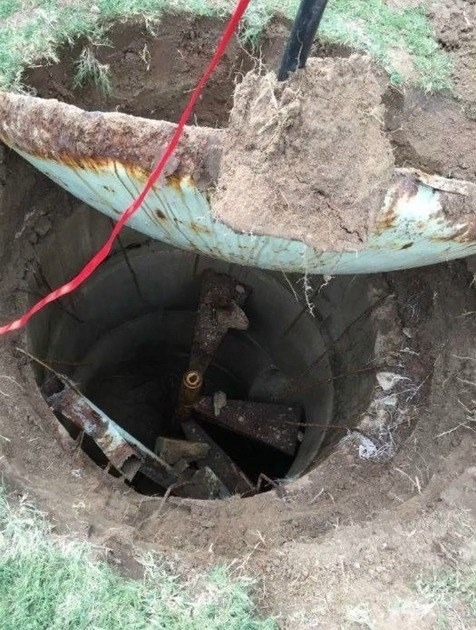When John Sims purchased his home in Tucson, Arizona, from a friend, he had no idea that his new property held a secret tied to the Cold War era. The previous owner had whispered about something unusual buried in the backyard, but John initially dismissed it as mere neighborhood legend. However, the rumor lingered in his mind, sparking curiosity and driving him to investigate further.
John’s search led him to uncover a surprising permit from 1961, linked to Whitaker Pools, a company known for building swimming pools and nuclear fallout shelters during the tense U.S.-Soviet relations of the 1960s. This discovery fueled his determination to find out what lay beneath his property. With the help of metal detector enthusiasts, they pinpointed a spot in the backyard and began digging. Three feet below the surface, they hit something solid – a metal hatch, sealed tight and weathered by decades underground.
As John carefully opened the hatch and descended into the unknown, he was astonished to find a fully intact, Cold War-era nuclear bomb shelter. The structure, left undisturbed for over half a century, contained original features from the early 1960s, including metal bunk beds, canned food storage shelves, and emergency signage. It was a relic of a bygone era when the fear of global annihilation felt all too real.
The discovery sparked widespread interest, with photos of the underground shelter circulating across social media and capturing the public’s imagination. John’s story resonated with many, and he received messages from other Tucson residents who had similar structures on their properties. This unexpected discovery not only unearthed a piece of American history but also inspired a community conversation about the city’s Cold War past ¹.
Restoration and Education
Inspired by the response, John decided to restore the space and turn it into a mini-museum dedicated to the Cold War era. He began carefully cleaning and preserving the items, adding educational placards and guided tours for local visitors and school groups. The shelter became more than just a curiosity – it became a tool for educating people about a time when fear of nuclear war shaped daily life.
John’s passion project grew into a community effort, with neighbors exploring their own properties for hidden shelters or fallout supplies. Local historians and journalists took note, and the shelter gained media attention as a rare, preserved example of 1960s civil defense planning. The bomb shelter now stands as a powerful reminder of how ordinary families prepared for extraordinary threats, offering a sobering glimpse into a past where geopolitical tensions shaped backyards and daily routines ².
A Piece of History Uncovered
John’s discovery serves as a reminder that sometimes, the past is much closer than we think – just waiting to be rediscovered beneath our feet. His story highlights the importance of preserving history and sharing it with the community, ensuring that future generations can learn from the past. As John continues to restore and share his bomb shelter, he inspires others to explore their own properties and uncover the secrets that lie beneath ³.


